Sapodilla or Manilkara zapota is a tropical evergreen tree well known for its delicious brown fruits and its numerous health benefits. Native to Southern Mexico, Sapodilla is now a popular tree cultivated throughout the tropics mainly in India, Philippines, Malaysia, Sri Lanka, and Mexico.
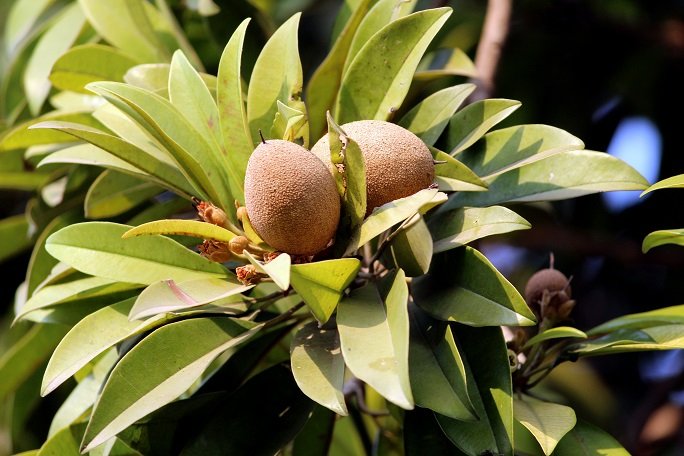
Sapodilla Tree
Manilkara zapota or Sapodilla is a slow-growing tropical tree that prefers warm and moist climates and grows both in dry and humid areas. It can reach up to a height of 20-30 meters and starts yielding fruits from the third or fourth year after planting.
The leaves of the tree are traditionally used for a variety of purposes like treating cold, cough, and diarrhoea. New leaves normally appear in pinkish brown color and they turn to dark green at maturity. The bark is strong and has medicinal properties. The tree is shallow rooted. Almost all the parts of the sapodilla tree have several health benefits.
Sapodilla Fruit
Sapodilla is mainly cultivated for its delicious fruits which are packed with nutrients. The fruits can be round or oval depending on the variety and contain a russet brown colored peel which is a bit sandy.
The unripened fruits yield a milky white latex when plucked, while the ripe fruits don’t produce the latex and are sweet smelling. The flesh of the ripened fruit is normally soft, sweet, yellowish to brown colored and has a pleasant flavor.
The sapodilla fruit normally contains 3 or more large black colored seeds with a white margin on it. The Pulp and the peel are edible parts of the fruit and are rich in nutritive value. However, in some areas, the peel is not eaten.
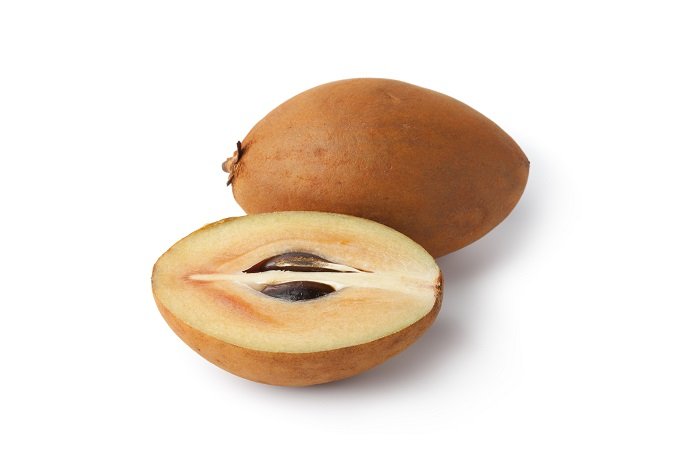
Benefits of Sapodilla Fruit and Tree
It has Anti-Arthritic Activity
A study conducted to evaluate the anti-arthritic activity of Sapodilla considering its use as a herbal medicine had concluded that sapodilla possesses significant anti-arthritic activity.
The study was performed using in-vitro inhibition of protein denaturation model. In which the leaf extract had significantly inhibited the protein denaturation, which is one of the causes of rheumatoid arthritis (1).
Makes you feel Energized
Being rich in sugars like glucose, fructose, and sucrose. Sapodilla can boost your energy levels. It is also a great source of several vitamins and minerals like potassium and magnesium making sapodilla great energy food to include in your diet.
It possesses Antidiabetic properties
Sapodilla helps in lowering the symptoms of diabetes. The fruit extract of sapodilla contains 24 antioxidant compounds. Which include polyphenols, flavonoids, terpenes and glycosides and several other compounds that are involved in controlling glucose and lipid levels in the body.
A study aimed to evaluate the antidiabetic activity of sapodilla leaf and fruit pulp had shown to significantly lower the levels of glycemia (glucose in the blood), and insulin in the treated Wistar rats. The study also said that the percentage of weight gain is declined in the treated animals (2).
It may treat Pulmonary problems
In folklore medicine, an infusion made from young sapodilla fruits and flowers is used as a remedy for pulmonary problems.
It can act as an Analgesic
The petroleum ether and ethanolic extracts of sapodilla leaves are tested for their analgesic activity on laboratory animals using hot plate method. The study had concluded that extracts of sapodilla possess analgesic effect at a dosage of 200mg/kg (3).
The analgesic activity of the sapodilla might be due to the presence of alkaloids, flavonoids, phenolic compounds, and several other phytoconstituents.
Good source of Antioxidants
Sapodilla is an excellent source of antioxidants. The pulp of the fruit contains great amounts of polyphenols which are known to exhibit antioxidant property. The polyphenols are known to fight inflammation and superoxide radicals present in our body (4).
Consuming sapodilla at the right ripen stage can be beneficial for you. Because at this stage, the fruit is packed with high amounts of antioxidants ranging from 600 to 1200 mg per 100 grams (5).
It may lower Blood pressure
A decoction prepared using the leaves of sapodilla and chayote (Sechium edule) is sweetened and was daily consumed to lower blood pressure.
For Cold and Cough
Old, yellowed leaves of sapodilla tree are used for treating cold and cough. In folk tradition decoction prepared using old, yellowed leaves are taken as a remedy for cold and cough.
It can prevent the growth of Bacteria and Fungi
The Extracts of the bark, seeds, and leaves of sapodilla are known to possess antimicrobial properties against bacteria and fungi.
The ethyl acetate extract of the sapodilla bark had shown antimicrobial activity against several pathogenic bacteria and also on several fungi like Aspergillus flavus, Fusarium Sp.
The extract of leaves showed a mild activity against several pathogenic bacteria like Bacillus megaterium, Bacillus subtilis, and Escherichia coli (6).
Research conducted to know the antimicrobial potential of sapodilla seed extracts had shown that seed extract possesses significant antibacterial and anti-fungal properties (7).
It can reduce Inflammation and Fever
Inflammation is a body’s response to an injury or infection. A healthy diet can help to reduce the level of inflammation. Sapodilla has been used as a traditional medicine to treat inflammation and fever.
A study conducted using ethanolic crude extracts and its fractions of sapodilla leaves inhibited the formation of edema induced by carrageenan. The extracts also exhibited Anti-pyretic activity by reducing the body temperature to a significant level.
Phytoconstituents like steroids, flavonoids, and tannins present in the plant might be responsible for Anti-inflammatory and Antipyretic activity (8).
Anticancer Activity
Sapodilla fruit and stem extracts contain compounds that have potential anticancer properties.
Research conducted using the methanolic extract of sapodilla fruit had shown to induce cytotoxicity in cancer cell lines in a dose-dependent manner. At the same time, the extract also increased the lifespan threefold in the tumor-bearing animal (9).
Antioxidants extracted from sapodilla fruit also displayed cytotoxicity in human colon cancer cell lines (10).
Intraperitoneal administration of ethyl acetate extract of sapodilla bark exhibited tumor inhibitory activity against Ehrlich ascites carcinoma (11).
It may have Anti-diarrheal activity
Diarrhea is a condition with repeated bowl moments and can cause dehydration due to loss of fluids. Sapodilla has been used as a natural medicine to recover from diarrhea due to its medicinal properties.
Leaves of the sapodilla were boiled and taken as an infusion to treat diarrhea. The presence of saponins and flavonoids in the leaves are known to influence intestinal absorption and peristalsis of the gut (12).
Unripe fruits are also used in folk medicine, the decoction made from these fruits is taken to stop diarrhea.
Used to treat stings and bites
In folk tradition, a paste made from the crushed sapodilla seeds was applied on the stings and bites of the venomous insects and animals.
Diuretic properties
Sapodilla seeds are believed to have diuretic properties and the dried powder of the seeds is used as a diuretic agent in traditional medicine (13).
The crushed seeds are also believed to treat bladder and kidney stones.
It can improve the Reproductive health
Sapodilla is also beneficial for reproductive health. Nahua women in the state of Veracruz, Mexico uses sapodilla as one of the primary plants to treat menstruation problems. An infusion made from the bark of the sapodilla tree is taken to stop the hemorrhage (14).
How to select a ripe sapodilla?
One can select a ripe sapodilla on a tree by just scratching a little bit on the peel of the fruit. If you observe green color then the fruit is unripe and if you observe a yellowish green color, then the fruit is ripe.
Ripe ones are soft, sweet smelling and don’t secrete any latex when plucked from the tree. While the unripe ones are frim and secrete white latex when plucked.
If you buy unripe sapodillas from the supermarket just keep them in a dry place for a few days till they become soft and observe the smell to know if they are ripe.
Word of Caution
Care should be taken while consuming the fruit such that not to swallow a seed as it might cause lodging in the throat and It is better to remove seeds of the sapodilla before giving it to your child.

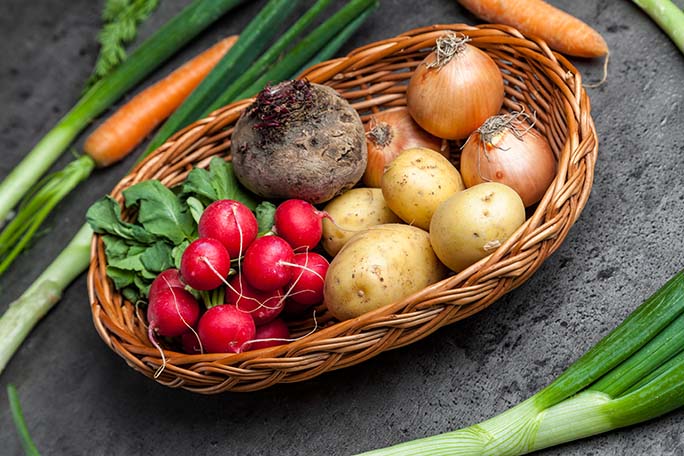

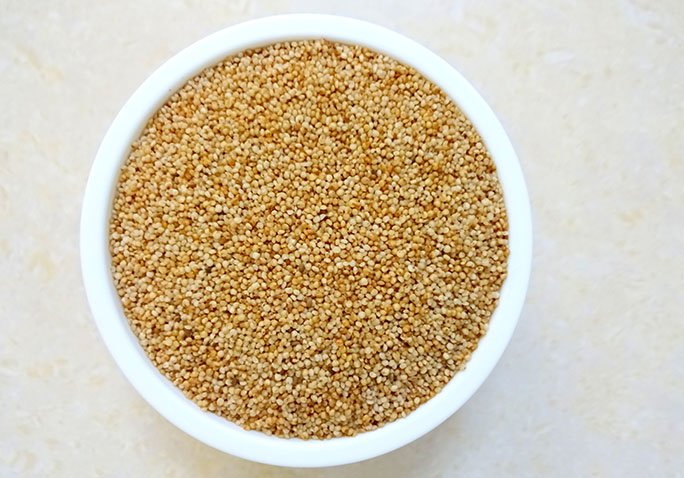
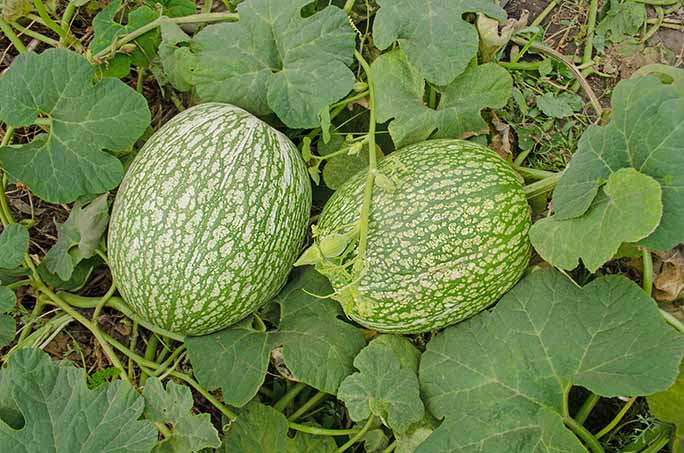

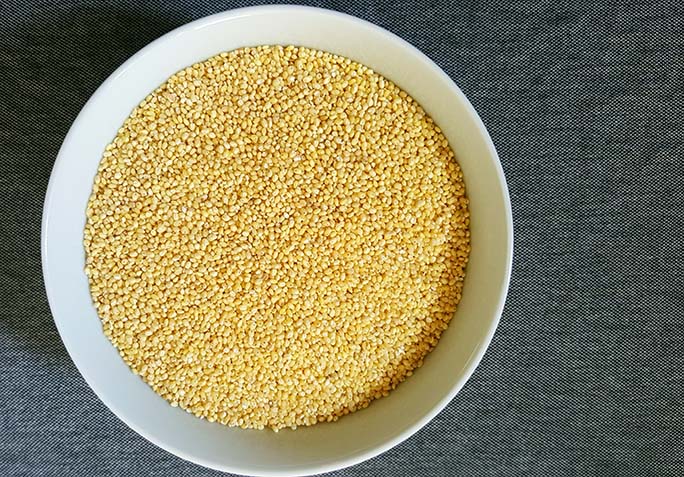
Comments